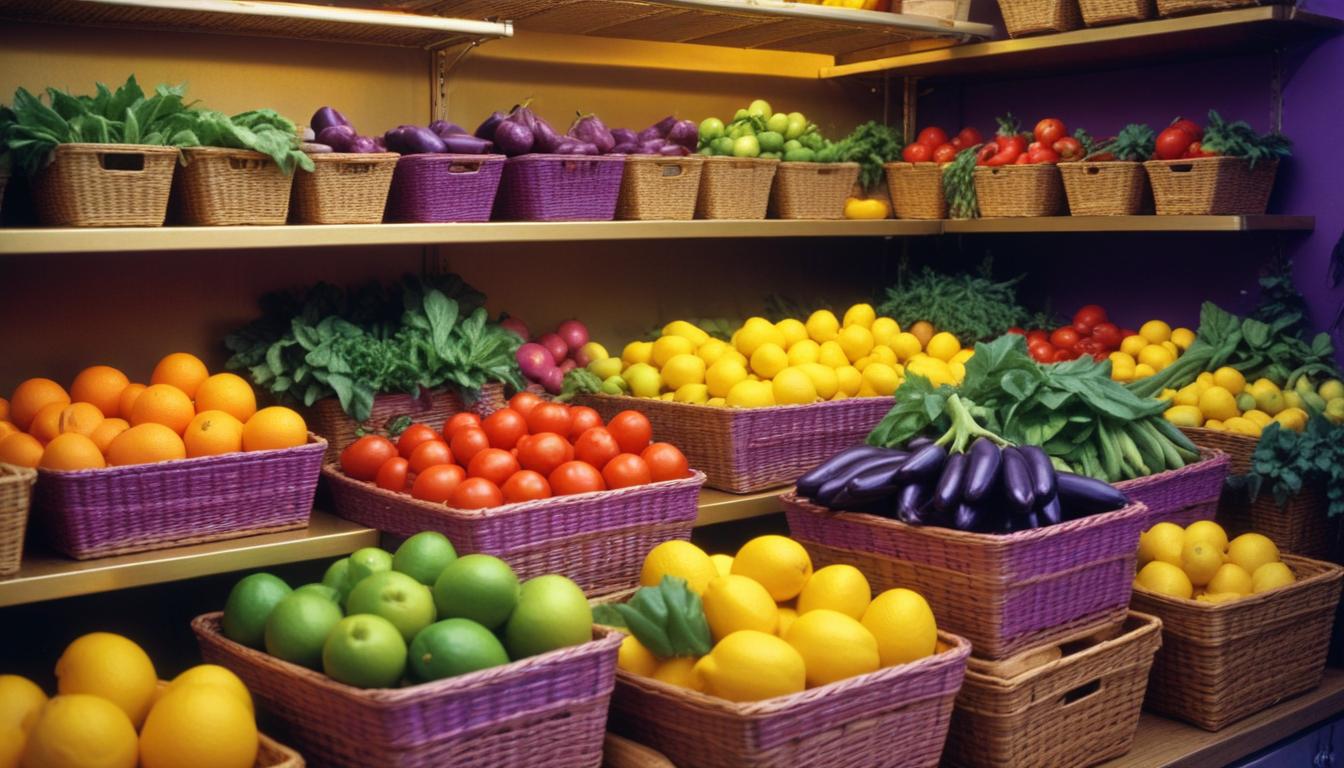You ever wonder what really goes on behind the scenes in fresh food sections? Those vibrant displays of fruits, veggies, dairy, and meats don’t just magically stay fresh and safe. It takes a lot of effort—smart systems, sharp eyes, and a heck of a lot of responsibility. That’s where HACCP certification steps in, acting like a guardian angel for the entire fresh food operation.
Honestly, it’s not just about ticking boxes or satisfying inspectors. HACCP—short for Hazard Analysis and Critical Control Points—is a practical approach that helps fresh food sections keep things clean, safe, and trustworthy. So if you manage or work in a fresh food department, you might want to stick around because this could change the way you think about food safety.
What Exactly Is HACCP? And Why Should You Care?
Let me break it down. HACCP isn’t some bureaucratic nightmare; it’s a smart, systematic way to identify where things could go wrong in your fresh food handling and then put controls in place to stop those risks from turning into real problems. Think of it as a safety net woven with logic and care.
Why does this matter for fresh food? Well, fresh produce and perishables are incredibly vulnerable to contamination, spoilage, and temperature mishaps. If those risks aren’t managed, you’re looking at not just wasted stock but potentially putting customers’ health on the line. And nobody wants that kind of reputation damage.
So, HACCP helps you spot hazards—like bacteria growth, chemical contamination, or cross-contamination—before they become a health hazard or a PR disaster. And since fresh food is all about that delicate balance of freshness and safety, HACCP’s like your best friend in keeping that balance intact.
Fresh Food Sections: A Minefield of Hidden Risks?
You might think fresh food sections are just about pretty displays and fast turnover. But honestly, they’re fraught with challenges that aren’t always obvious. Temperature control is huge. Let’s say your leafy greens sit out a little too long or your chilled seafood gets exposed to warmer air—those subtle shifts can accelerate spoilage or let harmful microbes thrive.
And it’s not just temperature. Cross-contamination can sneak in through dirty equipment, unwashed hands, or even packaging that’s been compromised. Plus, fresh food sections often juggle a mix of raw and ready-to-eat items, which ups the risk even more.
So, HACCP’s structured approach helps you identify these sneaky pitfalls and design steps—critical control points—to keep things locked tight. Because when you’re dealing with fresh food, ignoring risks isn’t just risky—it’s reckless.
Why HACCP Certification Isn’t Just “Nice to Have” But Essential
Here’s the kicker: having HACCP certification isn’t just about satisfying regulators or looking good on paper. It’s a signal that you take food safety seriously—customers, suppliers, and partners all see that and trust you more.
Think about it. When shoppers pick fresh food, they’re not just buying veggies; they’re buying peace of mind. They want to know that what they’re taking home won’t make them sick. HACCP certification is proof you’re on top of that promise.
Plus, many suppliers and retailers now require HACCP certification before partnering up. It’s quickly becoming a baseline expectation rather than a bonus. So if you want to stay competitive and grow, certification helps you open doors.
The Impact of HACCP on Daily Fresh Food Operations
You might be wondering how HACCP changes your daily routine. Honestly, it’s a subtle but powerful difference. Instead of just hoping everything stays fresh, you’re actively monitoring key factors like temperature, humidity, and hygiene.
For example, refrigeration units aren’t just “cold enough” anymore—you’ll have defined temp ranges and regular logs to back that up. Staff aren’t just “trained on safety” but follow clear SOPs (standard operating procedures) that minimize cross-contamination risks.
This not only protects the food but also cuts down on waste. When you catch a potential problem early, you can fix it before tons of product becomes unsellable. So it’s a win-win—better safety and better bottom line.
Common Challenges Fresh Food Sections Face with HACCP—and How to Beat Them
Let me be real: HACCP implementation isn’t always smooth sailing. A few bumps tend to come up. One biggie is getting everyone on board. If staff don’t understand why certain checks matter, it’s easy for procedures to be overlooked.
Another snag is keeping documentation up to date. It sounds tedious, but records are the backbone of HACCP—without them, proving safety is tricky.
Lastly, there’s a temptation to treat HACCP as a “one and done” deal. But it’s a living system. Food trends change, suppliers change, and risks evolve. So continuous training and reviewing your HACCP plan is key.
The good news? Tackling these challenges makes your fresh food section stronger and more resilient. It’s like upgrading from a leaky boat to a sturdy ship.
How Seasonal Changes Play Into HACCP for Fresh Food
You know what’s interesting? Seasons can throw curveballs at food safety. Summer heat, for example, ramps up spoilage risk, making temperature control even more critical. Winter’s cold snaps might affect humidity levels, influencing product quality.
HACCP certification accounts for these seasonal swings by encouraging dynamic monitoring and adjusting control limits when necessary. So your fresh food section is always ready—rain, shine, or scorching heat.
Real Talk: HACCP Certification and Customer Trust
Think about your last grocery trip. Did you pick up that fresh bunch of herbs because it looked nice, or because you trust the store? Trust plays a silent but huge role in buying decisions.
HACCP certification sends a strong message that your fresh food section prioritizes safety over just looks. It’s like a quiet handshake between your business and the customer—“We’ve got your back.”
And with social media and online reviews shaping reputations fast, having that certification can be your shield against negative publicity from safety slip-ups.
Steps to Get HACCP Certified: A Quick Look for Fresh Food Managers
Wondering how to get started? It usually begins with a thorough assessment by a qualified HACCP consultant who understands the ins and outs of fresh food.
Then you’ll develop or update your HACCP plan, train your team, and set up monitoring systems. Once ready, a certification body conducts an audit. Pass it, and voilà—you’re officially HACCP certified.
Don’t worry—many certification bodies offer ongoing support, so you’re not alone on this journey.
Final Thoughts: Why Fresh Food Sections Can’t Afford to Ignore HACCP
So, is HACCP certification worth the effort? For fresh food sections, it’s more than worth it—it’s essential. It helps you manage risks proactively, builds trust with customers, and opens doors to new business opportunities.
Sure, implementing HACCP takes some elbow grease, but the payoff is clear: safer food, less waste, and a reputation that shines. Honestly, it’s one of the smartest investments you can make to future-proof your fresh food operation.
After all, when it comes to fresh food, safety isn’t just a policy—it’s the heart of your business.



